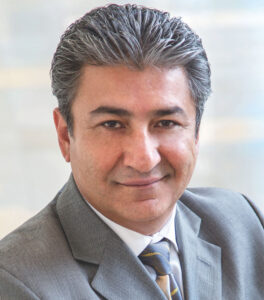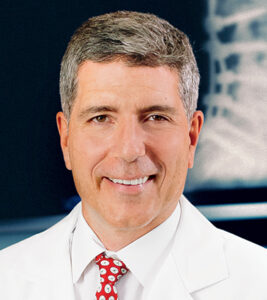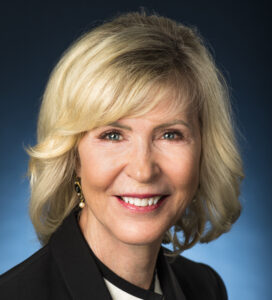Writer: Joey Garrand
4 min read April 2021 — As a $4 trillion industry, which would be the fourth-largest economy in the world by itself, healthcare is a cornerstone of modern society. While healthcare has improved dramatically over time, its costs have increased as well. According to the U.S. Centers for Medicare & Medicaid Services (CMS), National healthcare expenditures as a percentage of GDP have increased steadily over time, from 5% in 1960 to 17.7% in 2019. Here is what South Jersey healthcare leaders are doing to control healthcare costs while maintaining quality.
 Amy Mansue, President & CEO, Inspira Health Network
Amy Mansue, President & CEO, Inspira Health Network
Part of the conversation is giving people the information they need to better manage their care. We are trying to identify the risk factors that end up exacerbating health concerns. A lot of that is using our data and AI, which allows us to model healthcare outcomes. That may drive up costs in the short term because they will be accessing more primary care, but in the long term this will generate massive savings. We want to continue proactively conducting those screenings. Our breast screening department has been awarded a grant to carry out the outreach for breast screenings that will hopefully prevent long-term health issues.
 Al Maghazehe, President & CEO, Capital Health
Al Maghazehe, President & CEO, Capital Health
This all comes down to population health, which is the first thing hospitals need to look at. This involves hospital systems taking responsibility for patient care and outcomes. For example, a patient who is part of Capital Health should have an extensive health checkup and using this health data, risk factors can be predicted using AI. We can then ensure that the condition is prevented. Healthcare will have to be all about prevention and sustainability. The biggest challenge hospitals will face is the dependence on payers. Hospital systems will need to accept risk based on this new model. Healthcare providers should charge a yearly rate and assume responsibilities for the outcomes after this point. Once we accept this risk, we have to be efficient. We have the potential to reduce healthcare costs by 30% to 40%. This is also a motivation for efficiency among healthcare providers, creating a world of fewer but much more efficient systems.
 Alexander Vaccaro, President, Rothman Orthopaedic Institute
Alexander Vaccaro, President, Rothman Orthopaedic Institute
Through technology, we’ve drastically reduced the cost of care. For doctors, telemedicine saves time and resources, and reimbursement rates reflect this. On the patient side, telemedicine saves time and transportation costs. Patients can have a 20-30-minute telemedicine visit with their doctor and go back to work. All of this filters down to increased societal productivity.
Remote monitoring is also helping to control costs. Through the iPhone and various sensors, we can monitor patient activity after surgery. Patients also respond to subjective questions, or patient-reported outcomes. With this information, we can determine whether or not a patient needs to revisit us sooner than later.
 Mary Ann Boccolini, President & CEO, Samaritan
Mary Ann Boccolini, President & CEO, Samaritan
The Medicare Hospice Benefit is a unique and comprehensive, patient-focused and cost-effective model of care. Services are fully covered for Medicare beneficiaries. The essential services needed to enable our patients to remain in the comfort of home includes our team of physicians, nurses, social workers, chaplains, spiritual support counselors and home health aides along with medications, medical equipment and more.
Now the healthcare industry is exploring value-based care and alternative payment models, among other options to assure the highest quality, cost-effective care for the best possible patient experience. With our excellent reputation, expanding services, advanced clinical expertise and infrastructure, Samaritan is well positioned to demonstrate the value of our care. For many years now we have consistently exceeded the national quality benchmarks as reported by the families of our hospice patients.
 David Baiada, CEO, BAYADA Home Health Care
David Baiada, CEO, BAYADA Home Health Care
We are in a period of transition in terms of how healthcare payment works. The reality is that the vast majority of healthcare remains on a procedural or fee-for-service structure, despite people’s best intentions and the desire to evolve to the mechanisms that incentivize better quality at a lower cost and better experiences at a lower cost. The reality is that hospitals get paid when people receive procedures and we get paid when people get visited at home. We are still quite early into the journey of shifting the way incentives work, the way healthcare is paid for in a way that is going to create sustainable lower costs and better outcomes. What we are seeing is perhaps another innovation that has been catalyzed or accelerated during the pandemic, which is that we believe alignment across segments is going to happen faster. It already is. Health systems are approaching organizations like ours with a desire for greater integration and alignment to create a seamless experience for patients. Health plans are devising new mechanisms to align incentives, structures and payment across the continuum, from hospital to home, to outpatient, to physician. Some aspects of those conversations have significantly accelerated.
For more information, visit:
